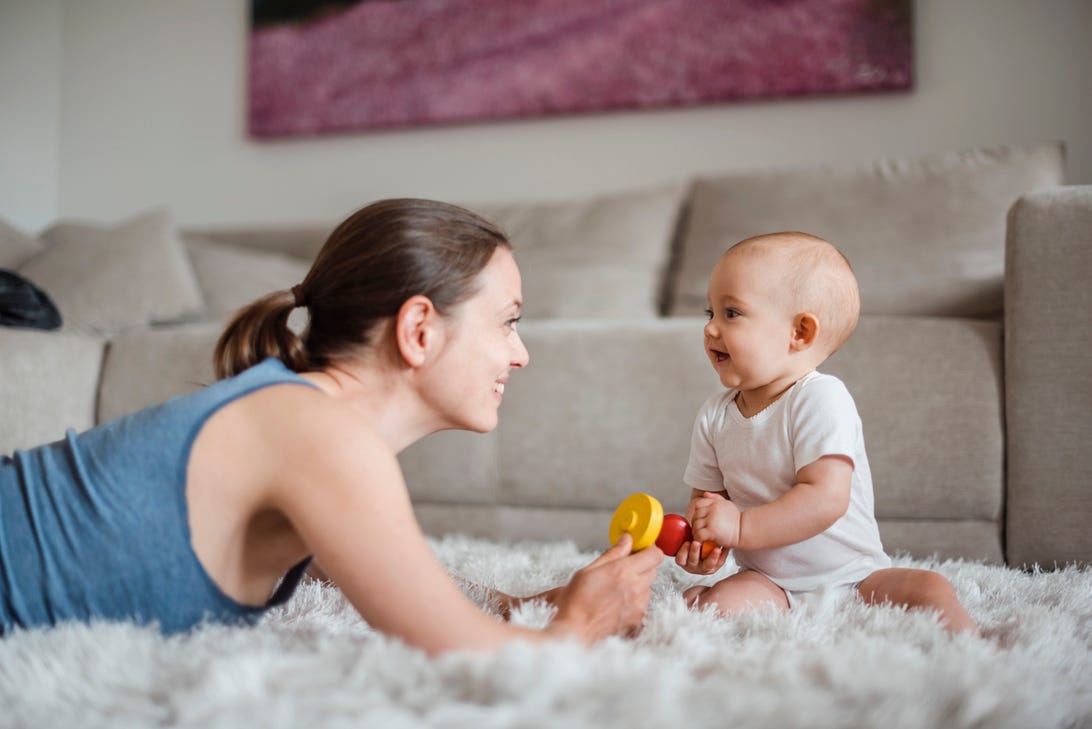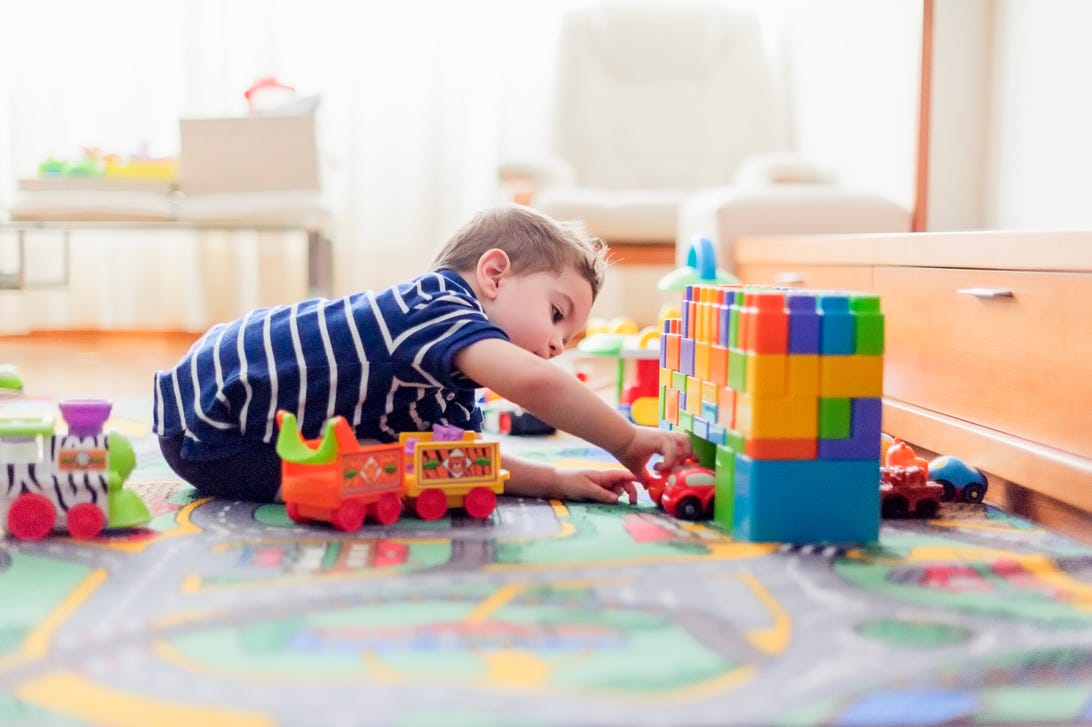Having a newborn involves an irregular cycle of feeding, changing diapers and sleeping. As they begin to attune to the world around them, they’ll express curiosity. This is where having forms of stimulation can be integral to their development. This guide helps you understand when to give your baby toys, which toys are appropriate for their age group and expert insights.
When do babies start playing with toys?


As your newborn grows, they’ll slowly start noticing the world around them. For the first month, they’ll only be able to see about 8 to 10 inches around them. You might notice that they start following movements or faces as they become more perceptive. With this improved awareness, they’ll develop another reflex: a palmar grasp. This is when they’ll reach for hair, faces or anything. And if they grab hold, good luck trying to get away.
Along with slowly developing vision, babies are establishing hearing around this time. As your baby becomes familiar with your voice, you’ll see them respond more when you speak. This is another opportunity where toys can aid in their development.
Toys for 0 to 1 month
For newborn babies to 1-month-olds, here are some of the best options:
- Provide them toys like large rings or rattles so they can shake them in their hands and make noise.
- Stuffed toys with bright colors allow them to gain a familiarity with their environment and explore different textures.
- Squeeze toys help them learn different sounds.
Toys for 2 to 3 months
Your child is starting to interact more with the world around them. Here are some toys that can help them develop more interactive skills:
- A baby play gym contains hanging toys that are sure to attract your child’s attention. There are even some baby gyms that contain musical elements, giving layered experiences.
- Soft blocks, squishy toys, soothing stuffed animals, rattles and teethers are perfect items for them to grab.
- A security blanket will help soothe them and make them feel comfortable.
- Cloth books help your child explore new images and different colors.
- Musical bugs activate songs to stimulate your child.
- Baby mobiles move slowly, allowing your child to follow the patterns and sounds.
Toys for 6 months to 1 year
Your child has become a master of interaction, so reward them in kind with the following types of toys:
- High-chair toys keep them entertained while you dine or cook.
- Baby mirrors are also wise, as your child wants to study themselves.
- Learning tools such as a lift a flap board book.
- Activity centers help them interact with a variety of different toys. The trick is to find one with a rotating seat.
- Stacking toys such as cups or blocks.
- Large bath toys preoccupy a fussy baby.
- Unique toys like baby’s first keys aid in their hand and eye coordination.
What developmental experts have to say


Do babies need toys? The consensus among the experts is yes. But what age is the most appropriate to introduce them to toys? Victoria Taylor, a teacher and founder of Best Case Parenting, explains: “Babies need toys starting at approximately 1 month old. Babies start teething and exploring objects as they get a little older, so it’s smart to have safe options on hand that also stimulate development.”
Meanwhile, how do toys aid in a child’s development? “Babies discover their world through play,” states Fisher-Price Play Lab Child Development Expert Lisa Lohiser. Along with introducing textures, sights, concepts and sounds, “Play is also a time when they interact with their caregiver and bond, hear words, and develop social connections.”
And when it comes to choosing the most appropriate toys, there’s a good balance between gifts and what your baby likes. “I buy the gifts my kids like, and when people would ask me for gift ideas, I would say get whatever you like. This way, both my children and I were introduced to new toys I didn’t know existed,” remarks Bethany Cook, author of For What It’s Worth: A Perspective on How to Thrive and Survive Parenting Ages 0–2.
Toy tips to keep in mind
When buying toys for your child, here are a few considerations:
- Avoid toys with sharp edges. Babies like to run their fingers over toys to explore textures, and they might try to put them in their mouths. Therefore, aim for softer, larger toys, reducing the likelihood of them becoming hurt.
- Use your imagination when playing with toys. It allows your child to interact with you and them. Most importantly, you’ll help your baby learn sounds while developing their social and emotional skills. It’s a parenting hat trick.
- Balance electronic toy use. They can aid in a child’s development, but they’re nowhere near as effective as you. Having that human interaction is essential to developing your child.
Too long, didn’t read?
Having your baby play with toys is integral to their development. You can begin around the first month of age as your child becomes attuned to the world around them. Over time, interaction with toys helps your baby learn and develop social, problem-solving and emotional skills. It’s even better when you use your imagination while playing, as your child can pick up on sounds, emotions, body language and other cues. From an early age, toys will be an essential part of interacting with and helping your child’s development.
The information contained in this article is for educational and informational purposes only and is not intended as health or medical advice. Always consult a physician or other qualified health provider regarding any questions you may have about a medical condition or health objectives.

